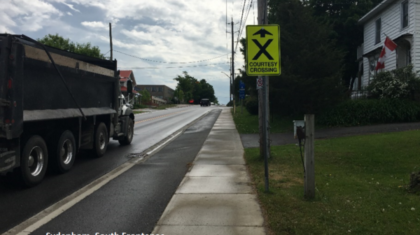
Can a city leverage its bicycle and pedestrian infrastructure to balance long-standing social equity issues with economic and tourism development goals? The Alta Greenville office is currently working with the City of Hardeeville, South Carolina, on a bike and pedestrian trails master plan to help address this complex question.

Hardeeville, which is located at the confluence of three highways — US 17, US 301, and Interstate 95 — is a rapidly growing community in South Carolina’s booming coastal region near the resort community of Hilton Head Island and historic Savannah, Georgia. Since 2000, the population of Hardeeville has tripled and the city has ballooned from a compact one-square-mile footprint to nearly fifty square miles in area.
Because of its aggressive growth over the past two decades, Hardeeville has a population that is physically spread out and socioeconomically diverse.
The historic urban core — what folks refer to as “Old Hardeeville” — is a collection of interstate exit businesses (gas stations, fireworks stands, fast food restaurants) and industrial sites with a Main Street corridor that connects a handful of adjacent neighborhoods, everyday retail offerings (including a grocery store), and public facilities, such as a library and park. Old Hardeeville includes many low-income households without access to private transportation in a part of the country that often requires it. (In this part of the state, a twenty-mile commute to work is common and local transit service is minimal.) At the same time, this part of the city lacks an adequate pedestrian infrastructure, with many sidewalk gaps in neighborhood streets and along heavily-trafficked arterial routes. On this side of town, safe biking and walking translates to safe access to daily needs and routines as well as opportunity to nearby districts and communities.
The recently-developed areas of Hardeeville include an “Anywhere USA” mix of big-box retail and restaurants, a new regional hospital campus, two college campuses, and several master-planned residential neighborhoods, including a large age-restricted Del Webb Sun City development. The residents of this part of the city enjoy higher incomes with substantial disposable incomes and access to commercial and educational resources. The need for biking and walking infrastructure on this side of town means access from student apartments to the campus of USC-Beaufort or a side path along a busy arterial for members of the Sun City Cycle Club.
In order to address this diversity of issues, Alta hosted a design workshop, or charrette, where our planners and designers worked directly with community stakeholders. The three-day charrette involved a full day of input and public meetings as well as an open studio where members of the Alta team developed design-based solutions to community-identified needs.




The Alta team’s recommendations reflect the diversity of needs expressed during the charrette, from improved sidewalk connections and streetscape improvements in downtown Hardeeville, to a mile-long walking path around the Coastal Carolina Hospital campus, to a realignment of the East Coast Greenway through Hardeeville that will add value to the city’s tourism economy. The overall network of recommended improvements will also stitch together otherwise isolated areas within the city and start to tie together significant community assets and amenities, making them available to residents and visitors alike.


In the coming years, Hardeeville will be tasked with implementing the projects outlined in the master plan. Alta is providing the city with a set of priority projects (as selected by members of the project advisory committee) which include detailed cost estimates so that city staff can incorporate these projects into its capital improvements budget.


